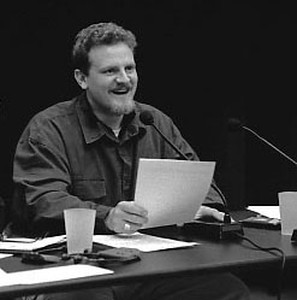Bertrand Clavez (born in 1970) has the agrégation qualification, a doctorate in art history and is a lecturer at Université Rennes 2 - Haute Bretagne.
These lectures organised by Les Amis de l'IAC are hinged in the three essential words in the art of the last 150 years—words that describe the relation between our society and the art of its time. They are 'modernity', 'avant-garde' and 'contemporary'.
Amis price: €3 per lecture – €10 for the four lectures
Public price: €5 per lecture – €15 for the four lectures
Free for students
RESERVATION RECOMMENDED
by e-mail: amis@i-ac.eu
by telephone: 04 78 03 47 72
FROM THE PAINTER OF MODERN LIFE TO THE PAINTER OF THE MODERN, THE HISTORY OF THE SUBSTITUTION OF THE SUBJECT IN ART BY THE SUBJECT OF ART. 1863-1888
'Modernity is the transitory, the fleeting, the contingent, half of art whose other half is the eternal and the unchanging', wrote in Baudelaire 'Le Peintre de la vie moderne', but his own poetics applied this research to 'bring out in fashion what it might contain that is poetic in the historical, drawing the eternal from the transitory' by comparing old poetic forms such as the sonnet to patterns drawn from contemporary vulgar, from the 'carrion' glimpsed along a path to the 'martyred breast of an ancient trollop' … ' that a poor libertine … kisses and eats'.
The poet's 'soul' was 'tough enough' to face 'rape and poison, dagger and burning', as he wrote in his preface to Les fleurs du mal, talking in terms of '… pleasant drawings/On the banal canvas of our pitiful destinies'. This face to face between art and reality with its cruel rawness was not an issue for Baudelaire alone but seems rather to have been one of the founding issues of modernity in art in the nineteenth century from the end of the Romantic convulsions to the aggressive compassion of the Realists. Before making the means of his art the very subject of his painting, the Modern painter should first finish with subjects, with the narrative forming part of pictorial projects since the Renaissance. This toppling of narrative took place in a whole series of registers, the leading ones being provocation and parody. The Modernist trial of the old order in art used approaches ranging from Géricault's Radeau to Manet's painting, from Courbet's Realism to the anarcho-revolutionary fire of the pointillists.
FROM HOAX TO AVANT-GARDE OR DESTRUCTION AS A PRINCIPLE FOR MAKING ART. 1878-1924
Even before the great upheaval launched by the Dada movement while the world was shaken by a total war, groups from artistic bohemian circles used the biting irony of their witticisms and the devastating humour of their hoaxes to encourage modern painters and those in favour of the 'Grand Style' to fight it out between each other. These para-artistic practices were long neglected by contemporary art historians but, at a time when Dada is no long seen as just the 'childhood disease' of Surrealism but as a ground swell that completely upset contemporary understanding of works of art, these provocative acts should be seen differently, not to make them fully-fledged works of art and precursors of post-Duchamp art, but to reconstruct the both tenuous and tenacious links between the generations marked by the 1870 war to those submerged by the 1914-18 war. Both caused destruction suffered and experienced that formed the mainspring of their creation. If only because they were the reason for the existence of an artistic Montmartre, they cannot be separated from the early twentieth century avant-garde movements.


